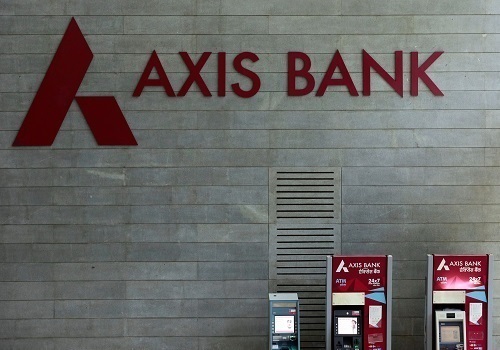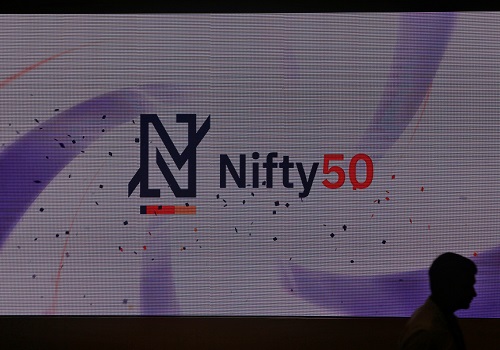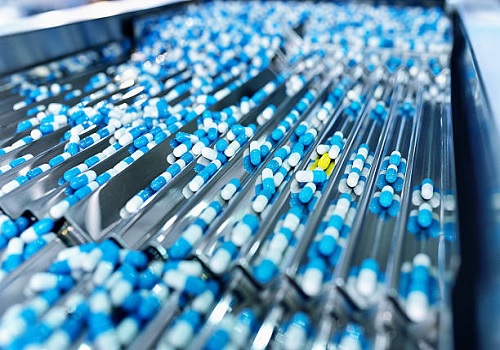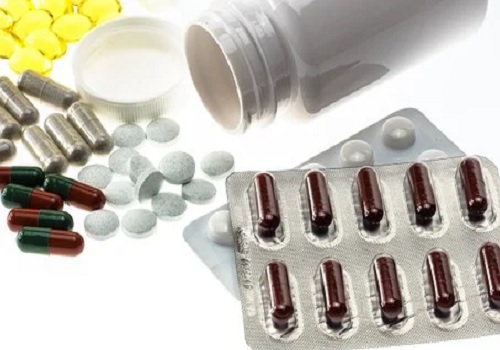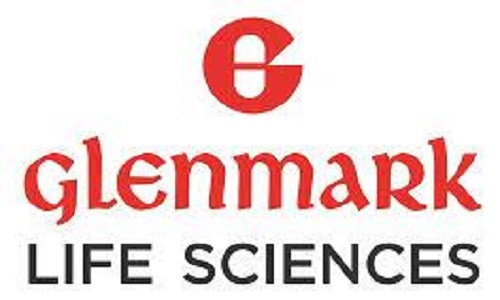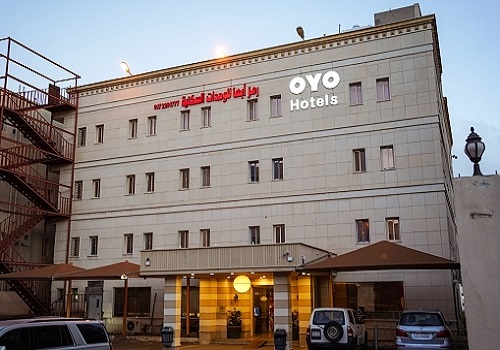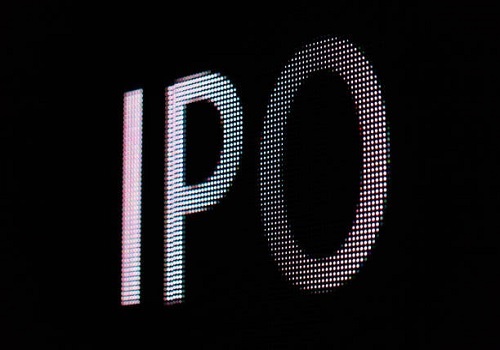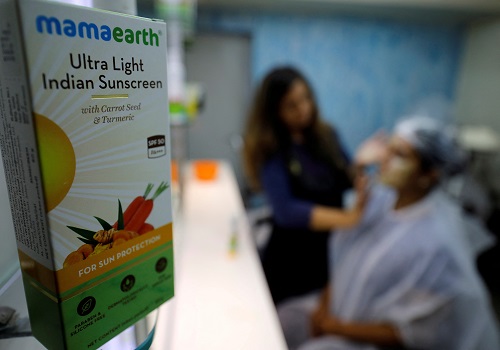Glenmark Life Sciences coming with an IPO to raise upto Rs 1552 crore

Follow us Now on Telegram ! Get daily 10 - 12 important updates on Business, Finance and Investment. Join our Telegram Channel
Glenmark Life Sciences
-
Glenmark Life Sciences is coming out with a 100% book building; initial public offering (IPO) of 2,15,51,798 shares of Rs 10 each in a price band Rs 695-720 per equity share.
-
Not more than 50% of the issue will be allocated to Qualified Institutional Buyers (QIBs), including 5% to the mutual funds. Further, not less than 15% of the issue will be available for the non-institutional bidders and the remaining 35% for the retail investors.
-
The issue will open for subscription on July 27, 2021 and will close on July 29, 2021.
-
The shares will be listed on BSE as well as NSE.
-
The face value of the share is Rs 2 and is priced 347.5 times of its face value on the lower side and 360 times on the higher side.
-
Book running lead managers to the issue are Kotak Mahindra Capital Company, BofA Securities India, Goldman Sachs (India) Securities, DAM Capital Advisors, BOB Capital Markets and SBI Capital Markets.
-
Compliance Officer for the issue is Rudalf Corriea.
Profile of the company
The company is a leading developer and manufacturer of select high value, non-commoditized active pharmaceutical ingredients (APIs) in chronic therapeutic areas, including cardiovascular disease (CVS), central nervous system disease (CNS), pain management and diabetes. It also manufacture and sell APIs for gastro-intestinal disorders, anti-infectives and other therapeutic areas. Its API portfolio comprises specialized and profitable products, including niche and technically complex molecules, which reflects its capability to branch into other high value products. It has strong market share in select specialized APIs such as Telmisartan (anti-hypertensive), Atovaquone (anti-parasitic), Perindopril (anti-hypertensive), Teneligliptin (diabetes), Zonisamide (CNS) and Adapalene (dermatology). It are also increasingly providing contract development and manufacturing operations (CDMO) services to a range of multinational and specialty pharmaceutical companies. It is a research and development (R&D)-driven API manufacturer, focused on undertaking dedicated R&D in its existing products and in areas where there is growth potential in the future. Maintaining high standards of process innovation and quality in its R&D and manufacturing operations is critical to its brand and maintenance of long-term relationships with its customers.
The company currently operates four multi-purpose manufacturing facilities which are situated on leasehold properties located at Ankleshwar and Dahej in the state of Gujarat, India, and Mohol and Kurkumbh in the state of Maharashtra, India with an aggregate annual total installed capacity of 726.6 KL as of March 31, 2021. Its R&D laboratories focus on new product development and complex molecules, cost improvement programs, process improvements and oncology product development. To assist it with its R&D initiatives, it has established dedicated teams for new product development, complex products, oncology product development, technology transfer, life cycle management and project management.’ It has a professional and experienced management team. Its management team has demonstrated the ability to successfully build and integrate its businesses with various operating activities through their cumulative years of work experience. In particular, they have led the process through which it has created value through organic growth, built brand recognition and loyalty and identified new business opportunities.
Proceed is being used for:
-
Payment of outstanding purchase consideration to the promoter for the spin-off of the API business from the promoter into company pursuant to the Business Purchase Agreement dated October 9, 2018.
-
Funding capital expenditure requirements.
-
General corporate purposes.
Industry overview
The pharmaceutical market is growing because of the aging population and an increase in global access to treatment. Financial and efficiency incentives are driving the pharma industry where a large share of the API production is being outsourced, both for generic and innovative drugs. Globally, India is one of the top suppliers of bulk drugs and formulations. The country has the highest number of USFDA approved plants outside the US as well as 44% of global abbreviated new drug applications (ANDA). The Indian generics industry can benefit substantially from the patent cliff as patents for branded molecules with cumulative global sales of over $251 billion are expected to expire between 2018 and 2024, opening new opportunities for the industry. India supplies a bulk of generic drugs globally not just to under-developed countries but also to the United States and UK. India supplies almost 40% of the total American generic drug demand and addresses as much as 25% of the total drug demand in the UK. India also accounts for 60% of global vaccine production, contributing 40 to 70% of the WHO demand. This success can be attributed to the advanced capabilities in the formulation development, the entrepreneurial ability and the vision of the industry to establish India’s footprint in large international markets. However, within the APIs and bulk drug manufacturing segment, India lags behind China. Currently, India imports around 68% of its API consumption by value from China and is highly reliant on China for fermentation-based APIs (antibiotics), feedstock and many key starting materials (KSMs).
The Indian API industry is on a high growth trajectory over the past few decades. It has contributed significantly to the global generics market fulfilling 20% of the global demand in generics in terms of volume, making India the largest provider of generic medicines globally. Currently, India has highest number of USFDA-approved plants outside of the United States as well as 44% of global abbreviated new drug applications (ANDA). Also, ranked third in the world, the Indian bulk drug industry has grown at a CAGR of around 9% over 2016–2020. It is further expected to expand and grow at a CAGR of around 9.6% during 2021–2026, signifying its future potential and evolving global importance. The API supply chain is shaped by changing demand in the pharmaceutical industry, with price and regulatory enforcement being two of the most significant drivers of change. Suppliers use a variety of tactics to attract sales. Some concentrate on lowcost, high-volume manufacturing; while, others focus on the development of non-commoditized, high-value APIs. Suppliers capture the largest share of a highly competitive and ever-changing global market based on their performance and strategies.
Pros and strengths
Leadership in select high value, non-commoditized APIs in Chronic Therapeutic Areas: The company is a leading developer and manufacturer of select high value, non-commoditized APIs in chronic therapeutic areas, including CVS, CNS and pain management and diabetes and continue to branch into other APIs. Its API portfolio comprises specialized and profitable products, including niche and technically complex molecules, which reflects its ability to branch into other high value products. As of March 31, 2021, it sold its APIs in India and exported its APIs to multiple countries in Europe, North America, Latin America, Japan and ROW. For the financial years 2021, 2020 and 2019, its revenue from regulated market products was Rs 12,374.06 million, Rs 10,966.21 million and Rs 9,685.07 million, or 65.64%, 71.33% and 68.93% of its total revenue from operations, respectively.
Strong relationships with leading global generic companies: Over the years, the company has established strong relationships with leading global generic pharmaceutical companies that has helped it expand its product offerings and geographic reach. It has been able to build and strengthen its relationships with them on account of its strong brand equity, high quality products, R&D skills, knowledge of the regulatory environment in the markets where it supply its products and track record of manufacturing APIs at different scales at its facilities, which have been inspected/audited by Indian and key global regulatory bodies such as the USFDA, MHRA, Health Canada and PMDA Japan.
Quality-focused compliant manufacturing and R&D Infrastructure: The company currently operate four multi-purpose manufacturing facilities which are situated on leasehold properties located at Ankleshwar and Dahej in the state of Gujarat, India, and Mohol and Kurkumbh in the state of Maharashtra, India with an aggregate annual total installed capacity of 726.6 KL as of March 31, 2021. Since 2015, its facilities have been subject to 38 inspections and audits by regulators including the USFDA, PMDA, COFEPRIS, Health Canada, MFDS (Korea), EDQM, other European regulatory agencies and CDSCO conducted on a periodic basis. It has not received any warning letters or import alerts from such regulatory authorities. Its facilities have also been subject to 432 inspections and audits by its customers during this period. Maintaining highest standards of quality and process innovation in its R&D and manufacturing operations is critical to its brand and maintenance of long-term relationships with its customers.
Strong focus on sustainability in operations: The company is focused on sustainability in its operations through meaningful interventions in environment management, safety initiatives in its operations and occupational health of its workforce. It has undertaken various initiatives relating to energy efficiency, recovery and reuse of solvents and water conservation, recovery and reuse to reduce its carbon footprint and be a responsible corporate citizen in its endeavor to address global environment issues. All of its manufacturing facilities currently have zero liquid discharge (ZLD) capabilities. It has an internal framework and governance structure in place for adherence to compliance standards. The company has established various standard operating procedures (SOPs), including SOPs to handle different categories of waste, and its waste management strategy includes monitoring and control procedures for waste categorization, segregation, minimization, safe handling, transport and disposal of waste. In its efforts to ensure resource usage conservation, it has implemented solvent recovery systems at its Ankleshwar and Dahej facilities.
Risks and concerns
Derive significant portion of revenue from API business: The company is dependent on its API business for a significant portion of its revenues. For the financial years 2021, 2020 and 2019, its API business accounted for 90.63%, 84.16% and 89.87% of its total revenue from operations, respectively. In turn, the company generates significant portion of its total revenue from its API business from the sale of products in a limited number of principal therapeutic categories such as the cardiovascular (CVS), central nervous system (CNS), pain management and diabetes areas. For the financial years 2021, 2020 and 2019, its revenue from the sale of products in the CVS therapeutic area was Rs 7,763.23 million, Rs 6,681.61 million and Rs 5,438.54 million, or 45.44%, 51.64% and 43.07% of its revenue from operations from its generic API business, respectively. For the financial years 2021, 2020 and 2019, its revenue from the sale of products in these four therapeutic categories was Rs 10,764.80 million, Rs 9,259.76 million and Rs 8,138.04 million, or 63.01%, 71.57% and 64.45% of its revenue from operations from its generic API business, respectively.
Depends on ability to develop and commercialize new products in timely manner: The company’s success depends significantly on its ability to successfully commercialize its products under development in a timely manner. The development and commercialization process is both time consuming and costly, and involves a high degree of business risk. During these periods, its competitors may be developing similar products of which it is unaware of that could compete directly or indirectly with its products under development. Due to the prolonged period of time for developing a new product and delays associated with regulatory approval process, it may invest resources in developing products that will face competition of which it is currently unaware. Such unforeseen competition may hinder its ability to effectively plan the timing of its product development, which could have an adverse impact on its financial condition, cash flows and results of operations.
Significant working capital requirement: The company’s business requires significant working capital including in connection with its manufacturing operations and its development of new products. The actual amount of its future capital requirements may differ from estimates as a result of, among other factors, unforeseen delays or cost overruns, unanticipated expenses, regulatory changes, economic conditions, technological changes, additional market developments and new opportunities in the API and contract development and manufacturing operations (CDMO) businesses. The company’s sources of additional financing, where required to meet its working capital needs, may include the incurrence of debt, the issue of equity or debt securities or a combination of both. If the company decide to raise additional funds through the incurrence of debt, its interest and debt repayment obligations will increase, which may have a significant effect on its profitability and cash flows.
Business depends on sale of products to key customers: The company is dependent on a limited number of key customers for a significant portion of revenues. For the financial years 2021, 2020 and 2019, its five largest customers for each respective period accounted for 55.88%, 56.65% and54.35% of its total revenue from operations, respectively, and its Promoter was its largest customer for each of these periods. For the financial years 2021, 2020 and 2019, revenue from sales to its Promoter and Promoter Group accounted for 40.86%, 41.00% and 39.94% of its total revenue from operations, respectively. Further, most of the business that it conduct with its significant customers is through purchase orders that are placed from time to time. It does not typically have exclusivity arrangements with its customers, including its key customers.
Outlook
Incorporated in 2011, Glenmark Life Sciences is the leading manufacturer of Active Pharmaceutical Ingredients (APIs). The company develops, manufactures, and supplies high-quality APIs for cardiovascular disease (CVS), central nervous system disease (CNS), pain management, and diabetes, gastrointestinal disorders, anti-infectives, and other therapeutic areas. It further operates in Contract Development and manufacturing operations (CDMO) to offer services to specialty Pharmaceutical companies. It has a professional and experienced management team. Its management team has demonstrated the ability to successfully build and integrate its businesses with various operating activities through their cumulative years of work experience. Over the years, it has established strong relationships with leading global generic pharmaceutical companies that has helped it expand its product offerings and geographic reach. On the concern side, the company’s manufacturing and R&D facilities are located in the Indian states of Gujarat and Maharashtra. A slowdown or shutdown in its manufacturing operations could have an adverse effect on its business, results of operations, financial condition and cash flows. It operates in an industry characterized by extensive patent litigation, including both litigation by innovator companies relating to purported infringement of innovative products and processes by generic pharmaceuticals and litigation by competitors or innovator companies to delay the entry of a product into the market.
The issue has been offered in a price band of Rs 695-720 per equity share. The aggregate size of the offer is around Rs 1497.84 crore to Rs 1551.72 crore based on lower and upper price band respectively. On the performance front, the company’s total income increased by 21.73% to Rs 18,859.76 million for the financial year 2021 from Rs 15,493.03 million for the financial year 2020, primarily due to an increase in revenue from operations. The company’s profit for the year increased by 12.29% to Rs 3,515.81 million for the financial year 2021 from Rs 3,130.98 million for the financial year 2020. The company intends to expand the size and scope of its business by diversifying its customer base in existing markets and increasing its geographic market coverage. It intends to expand its presence in countries/regions that are adopting a more stringent regulatory framework and are moving towards becoming well-regulated markets such as South Korea, Taiwan, Russia, Brazil, Mexico and Saudi Arabia. It also intends to create new opportunities in ROW markets by utilizing manufacturing in the least developed countries through local partnerships.












 320-x-100_uti_gold.jpg" alt="Advertisement">
320-x-100_uti_gold.jpg" alt="Advertisement">


